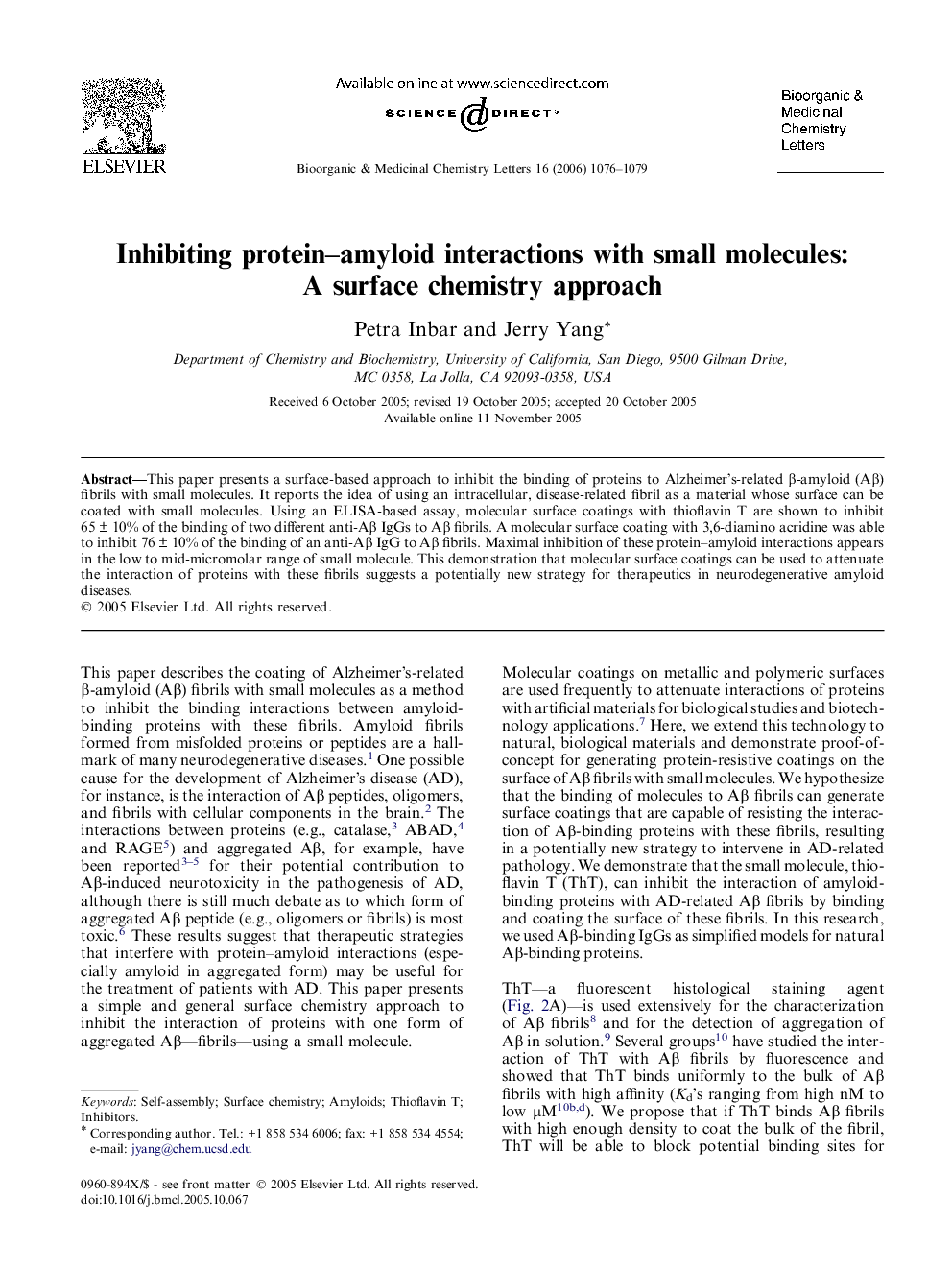| Article ID | Journal | Published Year | Pages | File Type |
|---|---|---|---|---|
| 1379284 | Bioorganic & Medicinal Chemistry Letters | 2006 | 4 Pages |
This paper presents a surface-based approach to inhibit the binding of proteins to Alzheimer’s-related β-amyloid (Aβ) fibrils with small molecules. It reports the idea of using an intracellular, disease-related fibril as a material whose surface can be coated with small molecules. Using an ELISA-based assay, molecular surface coatings with thioflavin T are shown to inhibit 65 ± 10% of the binding of two different anti-Aβ IgGs to Aβ fibrils. A molecular surface coating with 3,6-diamino acridine was able to inhibit 76 ± 10% of the binding of an anti-Aβ IgG to Aβ fibrils. Maximal inhibition of these protein–amyloid interactions appears in the low to mid-micromolar range of small molecule. This demonstration that molecular surface coatings can be used to attenuate the interaction of proteins with these fibrils suggests a potentially new strategy for therapeutics in neurodegenerative amyloid diseases.
Graphical abstractAnti-amyloid IgGs bind to the fibrillar form of Alzheimer’s-related Aβ peptides. Molecules that bind and coat the surface of Aβ fibrils significantly inhibit these IgG–amyloid interactions.Figure optionsDownload full-size imageDownload as PowerPoint slide
